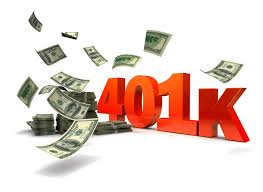
When I first heard the news, it felt surreal. Back in 2021’s bull run, a colleague joked, “The day Bitcoin shows up in a 401(k) menu, that’s when we’ve won.” That once-distant idea is now official policy.
For decades, the American 401(k) system has been the quiet glacier of global finance. With nearly $9 trillion in assets, it moves slowly but with unstoppable force, shaping the retirement of over 90 million Americans and A landmark executive order officially opened the door for digital assets to be included in 401(k) plans. Bitcoin, Ethereum, and other regulated crypto products are no longer a niche asset class they’re entering the largest pool of savings on Earth.
1.Why This Moment Is Different
The 401(k) is America’s main retirement tool, powered by decades of tax-deferred compounding. For years, crypto was excluded from this world. The reasons were obvious: volatility, lack of regulation, and fiduciary liability for employers.
So, what changed? The regulatory ice jam finally broke.
The 2025 executive order aligned three crucial U.S. institutions:
- The Department of Labor,
- The Treasury
- The SEC.
This alliance didn’t open the floodgates to every meme coin it created a controlled, compliant on-ramp for digital assets through:
- Spot Bitcoin ETFs (approved in 2024),
- Spot Ethereum ETFs, and
- Regulated digital asset funds.
It’s not asking savers to hold private keys. It’s integrating crypto through familiar, regulated wrappers that fit into existing financial infrastructure
2.The Math of a Revolution
The 401(k) ecosystem manages roughly $9 trillion. Even a conservative 2% allocation to digital assets represents $170 billion in new inflows and that’s more than ten times the combined Bitcoin holdings of every public company today.
But the nature of this capital is what makes it transformative. It’s not speculative “fast money.” It’s slow, disciplined, recurring contributions, millions of paychecks investing automatically, month after month.
3.Risk, Proportion, and Prudence
Can something as volatile as Bitcoin belong in a retirement portfolio? The key lies in allocation size.
As one advisor told me: “Think of it like hot sauce a few drops bring flavor, too much ruins the dish.”
The Department of Labor’s draft guidelines reportedly cap crypto exposure at 1–5% of total portfolio value. That means it’s a strategic diversifier, not a replacement for core holdings.
4.Market Impact: A New Center of Gravity
When the world’s largest pool of long-term capital starts buying, the entire market architecture changes.
- Volatility Dampener
Steady, emotionless buying from retirement accounts could smooth out the violent peaks and valleys that define crypto markets today.
- Institutional Legitimacy
When Bitcoin sits beside an S&P 500 index fund in a retirement plan, the legitimacy debate ends. Crypto becomes a recognized asset class, not a curiosity.
- New Investor Profile
The arrival of long-horizon savers means crypto will no longer be ruled by short-term traders. Instead, it gains a base of investors thinking in decades, not days.
5.Where Can You Access Digital Assets Safely?
While institutional platforms are still integrating, retail investors don’t have to wait to explore digital assets responsibly.
If you want to learn, invest, or experiment with emerging digital assets before they appear in traditional retirement menus, MEXC offers one of the most accessible and compliant routes.
- MEXC lists regulated crypto ETFs, major BTC and ETH markets, and growing sectors like RWA, AI tokens, and Layer-2 projects. Its Learn and Blog platform provides in-depth explainers just like this article so you understand why you’re investing, not just what
- With 0 Fees and Many Events
6.Global Ripple Effects: How Other Countries Might Follow
America’s 401(k) reform will not stay an isolated event. Countries like Canada, Singapore, and the U.K. are already exploring tokenized fund structures that could mirror this integration.
Europe’s MiCA framework has laid groundwork for regulated digital-asset funds that can slot into pension systems. Meanwhile, Asian sovereign wealth funds have begun experimenting with Bitcoin ETFs as part of long-term reserves.
The global message is clear: the line between “crypto” and “finance” is disappearing.
7.Beyond Bitcoin: The Bridge to a Tokenized Future
This isn’t just about Bitcoin. It’s about building a bridge to the tokenized economy
Soon, you could see:
- Tokenized Bonds & Real Estate: digitized, fractional versions of traditional assets traded on-chain.
- Regulated DeFi Yield Products: tokenized T-Bills generating on-chain returns as part of “fixed income” strategies.
- Smart Retirement Funds: hybrid portfolios combining Bitcoin, equities, and tokenized commodities under unified dashboards.
8.Conclusion
This transformation won’t happen overnight. It’s a slow, steady revolution, a rising tide rather than a tidal wave and in the next few years, seeing Bitcoin beside the S&P 500 in a retirement statement will stop feeling radical. It will feel normal.
And when that day comes, the “crypto vs. finance” debate will finally end not with a crash, but with quiet integration.
Disclaimer: This content is for educational and reference purposes only and does not constitute any investment advice. Digital asset investments carry high risk. Please evaluate carefully and assume full responsibility for your own decisions.
Join MEXC and Get up to $10,000 Bonus!
Sign Up


